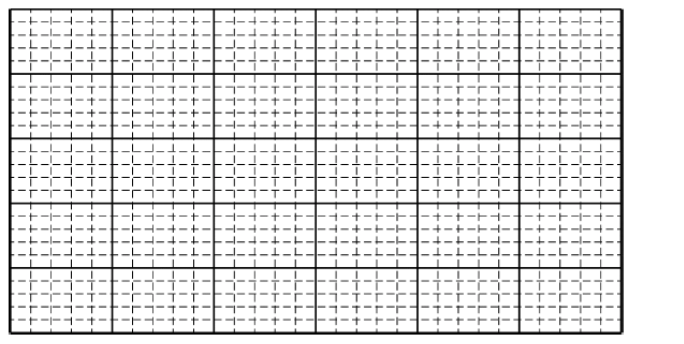Peter Apps
AP Physics 1 🎡
257 resourcesSee Units
As of 2021, College Board only tests Units 1-7 on the AP Physics 1 exam. This page's content will not be tested on the exam, but we kept it online for you all as a resource.
Enduring Understanding 1.E
Materials have many macroscopic properties that result from the arrangement and interactions of atoms and molecules.

Image courtesy of Giphy.
Resistivity (𝜌)
Resistivity is a physical property of a material that describes how much resistance the material has. Conductors will have a low resistivity and insulators will have a larger resistivity. For example, copper has a resistivity of 1.68x10^-8 Ωm, while rubber has a resistivity of 1 x 10^13 Ωm!
Resistivity can be calculated from the Length (L), Cross-Sectional Area (A), and Resistance (R) of a material using the equation below.

** Resistivity is also dependent on the temperature of the material. In general, higher temperatures will result in higher resistivity values, and also higher Resistances as well.
(AP 2 will go into more details of why this is, AP 1 just needs to know that higher temps → higher resistivities)
Example: (AP Classroom)
A group of students prepare a large batch of conductive dough (a soft substance that can conduct electricity) and then mold the dough into several cylinders with various cross-sectional areas A and lengths ℓ. Each student applies a potential difference ΔV across the ends of a dough cylinder and determines the resistance R of the cylinder. The results of their experiments are shown in the table below.

a. The students want to determine the resistivity of the dough cylinders.
i. Indicate below which quantities could be graphed to determine a value for the resistivity of the dough cylinders. You may use the remaining columns in the table above, as needed, to record any quantities (including units) that are not already in the table.
Vertical Axis: ________________________
Horizontal Axis: ________________________

ii. On the grid below, plot the appropriate quantities to determine the resistivity of the dough cylinders. Clearly scale and label all axes, including units as appropriate.

iii. Use the above graph to estimate a value for the resistivity of the dough cylinders.

b. Another group of students perform the experiment described in part (a) but shape the dough into long rectangular shapes instead of cylinders. Will this change affect the value of the resistivity determined by the second group of students?
____Yes ____No
Briefly justify your reasoning.
Answer - No, the resistivity is a physical property of the material. This means that as long as you are using the same material (dough), the shape will have no effect on the resistivity.
c. Describe an experimental procedure to determine whether or not the resistivity of the dough cylinders depends on the temperature of the dough. Give enough detail so that another student could replicate the experiment. As needed, include a diagram of the experimental setup. Assume equipment usually found in a school physics laboratory is available.
There are a bunch of options for this one, but you’ll basically need a way to measure R, L, A for the dough as well as the temperature. To measure the resistance, using a multimeter (or ammeter & voltmeter) would be the best tool. Possible options for changing the temperature could be an ice bath, hot plate, or Bunsen burner. I’d recommend keeping the Length and Area constant throughout the experiment to reduce uncertainty.
🎥Watch: AP Physics 1 - Unit 9 Streams
Browse Study Guides By Unit
👟Unit 1 – Kinematics
🌀Unit 2 – Dynamics
🚀Unit 3 – Circular Motion & Gravitation
⚡️Unit 4 – Energy
⛳️Unit 5 – Momentum
🎸Unit 6 – Simple Harmonic Motion
🎡Unit 7 – Torque & Rotational Motion
💡Unit 8 – Electric Charges & Electric Force
🔋Unit 9 – DC Circuits
🔊Unit 10 – Mechanical Waves & Sound
📚Study Tools
🧐Exam Skills

Fiveable
Resources
© 2025 Fiveable Inc. All rights reserved.